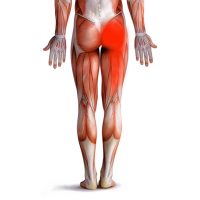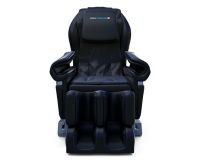Recently updated on September 19th, 2023 at 02:06 pm
Massage has long been a powerful tool in treating a range of musculoskeletal impairments, but have we gone past this fairly simple therapy and evolved into something more potent?
A newly popular procedure, dry needling, has emerged as a potentially faster solution for muscle stiffness, particularly in sports injuries.
A battle imposes itself: Dry needling vs massage? Which Therapy Is Right for You?
Read on to find out about the scope of these treatments and decide which is better.
Or is it simply a matter of preference?
Just what is dry needling?
Dry needling is a rather painless therapeutic procedure including superficial or deep penetration of filiform needles for treating a variety of musculoskeletal problems. It’s called “dry” because there’s no injection of any fluids.
The needles work by stimulating the trigger points, knotted areas and contractures or stiff bands in muscle fiber that cause discomfort, restricted movement, pain, etc.
While similar to acupuncture in terms of technique, dry needling derives from modern biomedical science, practised by trained physical therapists whose main goal is to treat local muscle tenderness, instead of focusing on overall energy flow and chi (qi) re-balancing.
Massage – types and practice
Older than the recorded time, body kneading has been a big part of medicine and now it’s having a comeback in the form of massage therapy.
Research shows that therapeutic massage can stimulate relaxation, improve blood circulation, relieve stiffness and alleviate soft tissue pain.
In chiropractic, sports physiology, physical therapy, reflexology, aromatherapy, massage has proved to be a healing method for improved neuromuscular function.
Depending on the intensity of pressure, manner of movement (stroking, gliding, kneading, percussion etc.), and purpose, we can differentiate massage techniques such as deep tissue massage, remedial, trigger point massage, sports massage, and much more.
Dry needling vs massage therapy
Whether your physical therapist will opt for a massage or dry needling will mostly depend on the trigger points in the myofascia and their “deepness”.
Practitioners’ experience with dry needling has proved that it has a quicker and more potent effect on deeper myofascial trigger point syndromes that cause active pain and acute muscle stiffness.
Since the needles have an instant, localized effect, the treatment can eliminate the immediate problem and needn’t be repeated regularly with some patients.
On the other hand, massage therapy has best results with latent trigger points, affecting strain-induced discomfort, chronic muscle stiffness (usually neck and shoulder area) that are usually treated in regular massage sessions.
Dry needling vs deep tissue massage
When we talk about deep tissue massage it commonly refers to a set of techniques for targeting deep tissue pain by applying forceful pressure to the affected trigger points.
Dry needling is basically one step further in trigger point stimulation, as the needles allow deeper and more precise impact than hand pressure.
That said, many patients who fear needles or are at higher risk of needle puncture infections, skin irritations and similar will rather opt for a less “invasive” deep tissue massage.
Dry needling vs remedial massage
Remedial (also called Swedish) massage is what we nowadays associate with Western massage therapy. Based on the essential principles of ancient massage techniques, it aims to address the overall myofascial imbalance, stimulate relaxation, improve blood flow and trigger muscle healing.
In other words, remedial massage is not the primary choice for deep trigger points and thus would be much less effective than dry needling for treating more serious neuromuscular issues.
Dry needling vs sports massage
Sports massage therapists work with athletes in both prevention and treatment of sports-induced injury, muscle soreness and fatigue, whiplash, and other common dangers to the skeletomuscular system.
Dry needling can be beneficial for athletes if the therapist needs to have more clear and precise access to trigger points in case of injury, or when in need for instant pain relief after muscle pulling.
Dry needling vs trigger point massage
Out of all massages, trigger point massage resembles dry needling the most. It includes applying firm and prolonged thumb or palm pressure on the throbbing trigger point. Both techniques have the same effect except for the “deepness” of access and precision.
Trigger point massage is a great alternative for dry needling with patients who are wary of needles or have very sensitive skin.
Although very small, needle punctures are susceptible to infection, irritation, or redness if not properly looked after.
Can I get a massage after dry needling?
Although it feels nothing more than a pinprick, the insertion and extraction of needles can cause muscle soreness after the dry needling treatment.
A gentle massage or “kneading” is not only pleasant but recommended after dry needling to loosen up the muscles, eliminate tension and help the therapy work its magic.
Nonetheless, keep in mind that more forceful techniques like deep tissue massage can be counter-effective, so focus on gentle and relaxing massage to achieve best results.
Can massage therapists dry needle?
Before opting for dry needling, it’s imperative that you find a reputable myotherapy salon and a trained and licensed dry needling practitioner with credibility. Physical therapists and chiropractors mostly have certificates for dry needling, although massage therapists can also opt for the same.
Massage therapists who haven’t gone through any kind of dry needling training and skill assessment ARE NOT qualified for dry needling and should by no means practice it.
Final verdict: Is dry needling better than massage?
Essentially, both massage and dry needling serve to eliminate tenderness in soft tissue, strengthen the connection between our brain and muscle, and thus potentially heal accompanying issues with joints, cramps, anxiety, etc.
Depending on the severity of the issue and type of muscle pain, dry needling can be either extremely effective or unnecessary. For high–pain trigger points that need precise and thorough treatment dry needling can be the drug-free, long-term cure.
If, on the other hand, you’re in need of simple muscle relaxation, chronic myofascial pain relief, or injury prevention, then a combination of various massage techniques could turn out to be more effective and beneficial.



